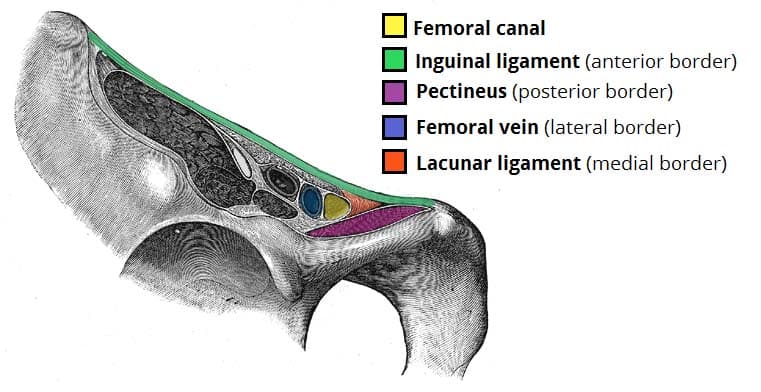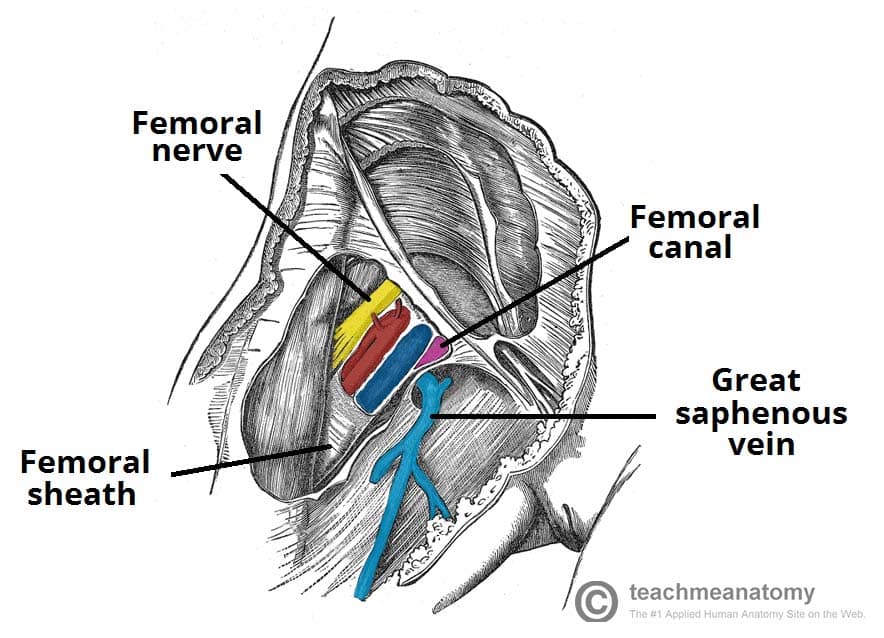The femoral canal is an anatomical compartment located in the anterior thigh. It is the smallest and most medial part of the femoral sheath. It is approximately 1.3cm long.
In this article, we shall look at the anatomy of the femoral canal – its borders, contents and clinical relevance.
Borders
The femoral canal is located in the anterior thigh within the femoral triangle.
It can be thought of as a rectangular shaped compartment with four borders and an opening:
- Medial border – lacunar ligament.
- Lateral border – femoral vein.
- Anterior border – inguinal ligament.
- Posterior border – pectineal ligament, superior ramus of the pubic bone, and the pectineus muscle
The opening to the femoral canal is located at its superior border, known as the femoral ring. The femoral ring is closed by a connective tissue layer – the femoral septum. This septum is pierced by the lymphatic vessels exiting the canal.
Contents
The femoral canal contains:
- Lymphatic vessels – draining the deep inguinal lymph nodes.
- Deep lymph node – the lacunar node.
- Empty space.
- Loose connective tissue.
The empty space allows distension of the adjacent femoral vein, so it can cope with increased venous return, or increased intra-abdominal pressure.
Clinical Relevance: Femoral Hernia
The femoral canal is of particular clinical importance, as it a common site of bowel herniation.
A hernia is defined as ‘where an internal part of the body pushes through a weakness in the muscle or surrounding tissue wall.’ In a femoral hernia, part of the small intestine protrudes through the femoral ring.
It presents as a lump situated inferolateral to the pubic tubercle. This type of herniation is more common in women, due to their wider bony pelvis.
The borders of the femoral canal are tough, and not particularly extensible. This can compress the hernia, interfering with its blood supply. A hernia with a compromised blood supply is known as a strangulated hernia.

